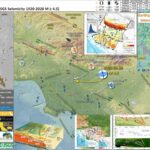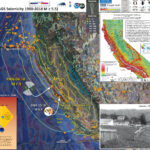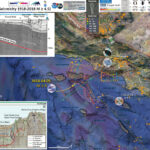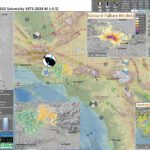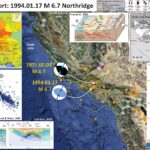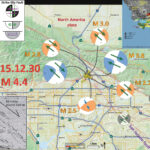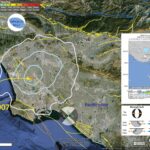Late last night there was a sequence of earthquakes in southern California. The mainshock is a M 4.5 earthquake. https://earthquake.usgs.gov/earthquakes/eventpage/ci38695658/executive This temblor was widely felt across the southland (including by my mom, who was warned by earthquake early warning). This…
18 April 1906 San Francisco Earthquake
Today is the anniversary of the 18 April 1906 San Francisco Earthquake. There are few direct observations (e.g. from seismometers or other instruments) from this earthquake, so our knowledge of how strong the ground shook during the earthquake are limited…
Earthquake Report: Channel Islands Update #1
Well well. There was lots of interest in this M 5.3 earthquake offshore of Ventura/Los Angeles, justifiably so. Southern California is earthquake country. Here is an update. There was lots of information that I was trying to incorporate and I…
Earthquake Report: Channel Islands
I was finally getting around to writing a report for the deep Bolivia earthquake (Bolivia report here), when a M 5.3 earthquake struck offshore of the channel islands (south of Santa Cruz Island, west of Los Angeles). As is typical…
Earthquake Report: 1971 Sylmar, CA
This earthquake was the second earthquake in the state of CA to lead to major changes in how people in the state handled earthquake hazards and risk and today is the 47th anniversary of this earthquake. The first important earthquake…
Earthquake Report: 1994 Northridge!
Today is the commemoration of the 1994 M 6.7 Northridge Earthquake. I was living in Arcata at the time (actually in my school bus in a driveway to save money). I remember calling my mom from a pay phone to…
Earthquake Report: San Bernardino (Devore)!
A couple days ago, I was on the road and did not yet have my laptop. Therefore I am reporting about this earthquake a few days afterwards… There has been a swarm of seismic activity in the San Bernardino area.…
Earthquake, Straight out of Compton!
An earthquake occured this morning in Compton! Initially a 3.2, is currently a M = 2.9, as reported by the USGS (here is their web page). Here is a map that shows the faults, the earthquakes from the past decade,…
Los Angeles: Newport Inglewood Earthquake!
Last night, we had another earthquake on the Newport Inglewood fault (NIF) system. This fault ruptured in 1933, which led to Long Beach adopting the most strict building codes in the nation. Later, these codes were adopted by the state,…
Earthquakes in Los Angeles
We have had a number of small earthquakes in the Los Angeles Basin in the past month. These three earthquakes appear aligned with the Newport Inglewood fault system, the fault that ruptured in 1933 for what is generally called the…

